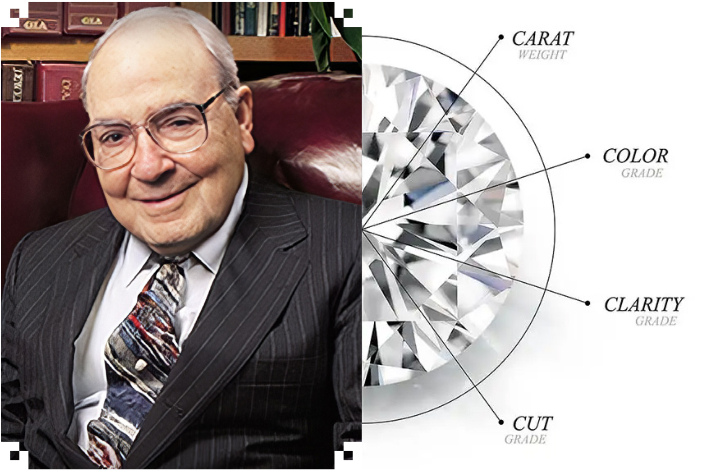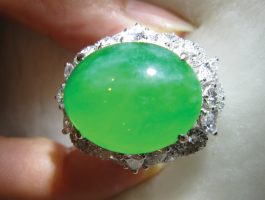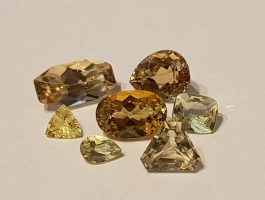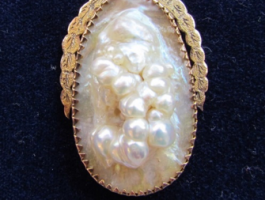Gemmologists who changed the game: Richard T. Liddicoat Jr.
featured newsA long lasting legacy in the industry, Richard T. Liddicoat Jr developed the iconic “Four Cs” system by which diamonds are graded. MIKAELAH EGAN reports.

Born in March of 1918 in Michigan, Liddicoat’s father was a professor of engineering at the University of Michigan. His grandfathers worked as copper miners from Cornwall.
Encouraged to explore the world from an early age, Liddicoat became interested in geology. He completed his bachelor’s degree at the University of Michigan in 1939, followed by a master’s degree in mineralogy.
In 1940, Liddicoat joined the Gemological Institute of America (GIA) in Los Angeles as sssistant director of education. Robert Shipley had established the GIA just nine years earlier and with its rapid expansion, needed support in leading its education direction.
After a recommendation from his professor, Liddicoat joined the GIA in Los Angeles in 1940 as the assistant director of education.
After receiving a promotion to director of education in a short time, Liddicoat left GIA in 1942 to serve in the US Navy during World War II. Upon his return, he was re-appointed to his position at the GIA and also named director of research. While teaching gemmology and developing courses, Liddicoat also worked on producing the Handbook of Gem Identification, the first book of its kind designed to assist students through their studies and aid the general practising gemmologist.
In 1952, Liddicoat was named Shipley’s successor and accepted the position of executive director of GIA. During this time, the jewellery industry faced an ongoing dilemma with standardising grading diamonds. In collaboration with colleagues across Los Angeles and New York, including Robert Crowningshield, Liddicoat developed the iconic ‘4Cs’ system by which diamonds are routinely graded worldwide today.
Following refining the system, he travelled through the US, teaching this new grading system to the broader jewellery industry.
This new system allowed diamond dealers and retailers to communicate with each other and their consumers in the same language — this minimised discrepancies and allowed diamonds to be categorised on a uniform basis.
Lustrous pearls
Liddicoat continued to assist the jewellery industry in the following years, complementing the establishment of gemmological education at GIA with an additional, tailored curriculum for retail jewellers.
By the 1960s, Liddicoat oversaw training some of America’s largest jewellery retail teams. Around the same time, he travelled to Japan to gather information and develop a course on cultured pearls, which also led to the development of the first GIA pearl grading system.
Liddicoat’s effort in developing crucial contacts in Japan led to the GIA’s courses being offered in Japanese – the first language other than English – for the first time.
Liddicoat was also an avid supporter of innovation on the technology front. He contributed to and developed himself several gemmological instruments in his time. These include the Diamolite, the ProportionScope, and the prism spectroscope.
Long-lasting legacy
His continued support of the gemstone and jewellery industry was evidenced by regular attendance at American Gem Society Conclaves, International Gemmological Conferences, and the International Kimberlite Conferences.
A firm believer in spreading knowledge, Liddicoat expanded the GIAs gemmological library, now named the Richard T. Liddicoat Gemological Library and Information Centre, and ensured it was globally accessible. In honour of his 40-year dedication to serving the gemmological and jewellery industries, the National Museum of Natural History in Washington DC named a gemstone species of tourmaline after Liddicoat in 1977 – Liddicoatite.
After 60 years of mentorship, innovation, and devotion while still serving on the board of governors at the GIA, Richard T. Liddicoat passed away in 2002.
He left behind him a significant legacy, highlighted by substantial contributions and insight, that has changed the gemmology industry forever.
Mikaelah Egan FGAA Dip DT began her career in the industry at Diamonds of Distinction in 2015. She now balances her role at the Gemmological Association of Australia with studying geology at the University of Queensland. Visit instagram.com/mikaelah.egan




